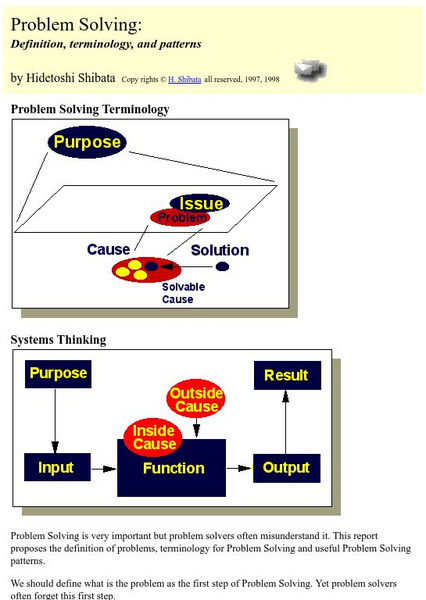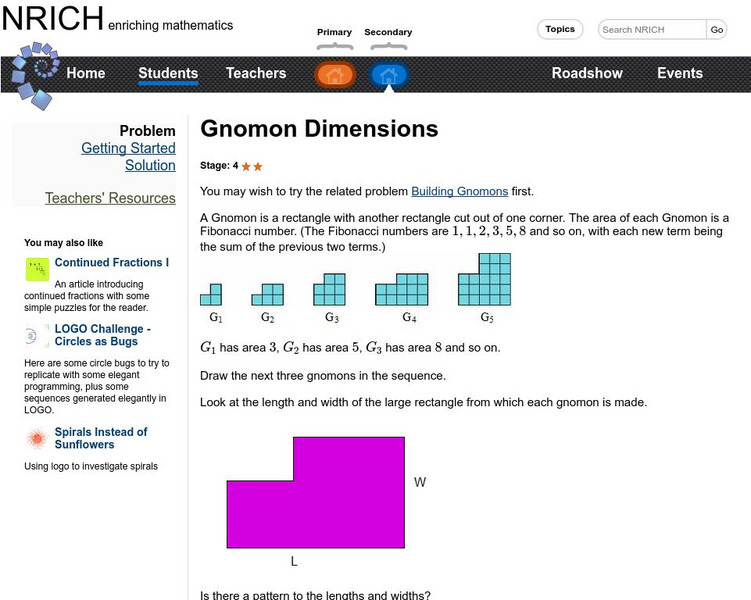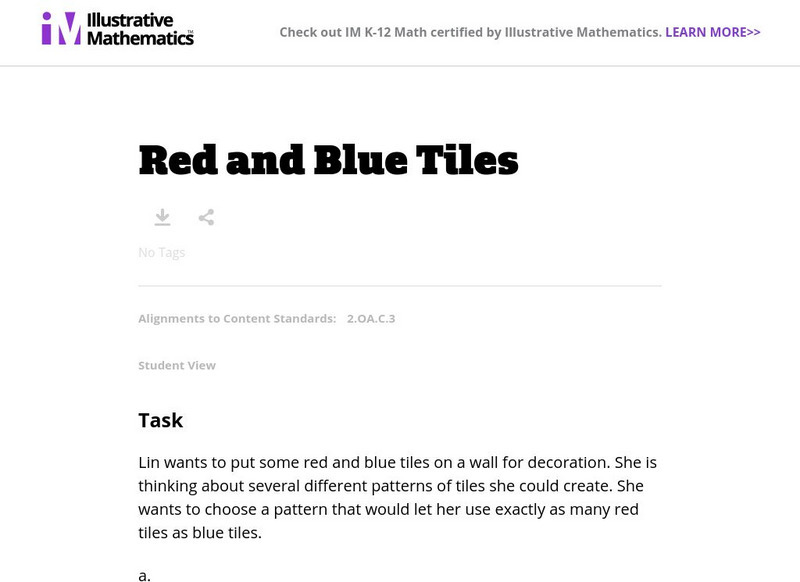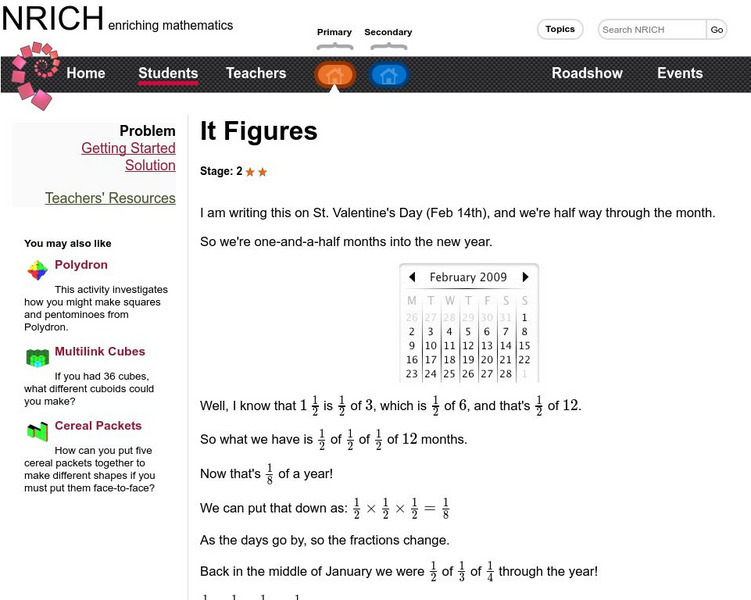Other
Problem Solving: Definition, Terminology and Patterns
A very concise and informative article about problem solving. Provided are definitions, terminology and patterns associated with problem solving.
Other
Reading Quest: Strategies for Reading Comprehension: Problem Solution
Working with students on identifying problem and solution in their reading? Here is a simple concept, with a printable chart, for teaching and reinforcing this concept. Applicable for any subject area, could be used (modified) at any level.
Better Lesson
Better Lesson: Using a Pattern to Solve a Problem
Patterns are prevalent in all levels of math. Common Core Standards expect students to be able to use structure - like that found in repeating the patterns of odd and even numbers or counting by 5s or 10s - to solve problems (MP7).
TED Talks
Ted: Ted Ed: Can You Solve This?
In this video, Veritasium asks people to try and figure out the rules of a pattern presented. This video teaches us about the scientific method and how our preconceived notions can affect how we discover new information. [4:43]
PBS
Pbs Mathline: Bead Dazzling (Proportional Reasoning) [Pdf]
A comprehensive instructional activity on algebraic thinking where students create and identify patterns using proportional reasoning. Research based, this instructional activity includes technology connections, items for discussion, and...
University of Cambridge
University of Cambridge: Nrich: Gnomon 1
This interactive activity gives you an opportunity to explore a specific number pattern named the "Fibonacci sequence." See what other patterns you can discover while you manipulate the blocks. There is a "Printable Page" link if you...
REMC Association of Michigan
Remc Association of Michigan: 21 Things4 Students: 21. Computational Thinking
Computational thinking can be used to take a complex problem, understand what the problem is and develop possible solutions to solve or explain it. In these six Quest, students will learn about the four stages of computational thinking:...
PBS
Pbs Mathline Lesson: Mix It Up [Pdf]
A lesson based on the story, "Oliver's Fruit Salad," where students explore the concept of proportional reasoning through modeling, student sharing, and questioning. A great introductory lesson for this concept that is sure to engage...
Illustrative Mathematics
Illustrative Mathematics: Red and Blue Tiles
Students will determine whether a set of objects contains an even or odd number of members using strategies such as pairing objects or attempting to divide the objects into two equal subgroups. Discussion questions and explanations are...
Other
Casting Out Nines: A Math Computation Checking Strategy
It's a mathematician's dream come true. An easy trick for checking mathematical computations, without a calculator! Believe it or not, it works with all four operations.
Iowa State University
Math Jeopardy
It's time for Jeopardy. Detailed directions and suggested game questions are given for Math Jeopardy. Questions are attached in a PDF file that can be downloaded and printed.
PBS
Pbs Learning Media: Everyday Algebra Plus: Targeted Math Instruction
Algebra lesson focuses on using patterns and relationships to write equations with two variables to represent relationships and patterns in real-world problems, plotting ordered pairs on a coordinate grid, and interpreting the meaning of...
PBS
Nh Pbs: Nature Works: Estuaries
Learn more about estuaries when you visit this informative site. This resource provides locations of and weblinks to estuaries in the United States.
American Forum for Global Education
American Forum for Global Education: Talking With Our Hands
This lesson plan from the American Forum for Global Education is designed to help children understand that using hands to "convey messages" is a form of communication.
University of Cambridge
University of Cambridge: Nrich: It Figures!
Learn fraction multiplication with this fun tutorial.
Other
Understanding Object Oriented Programming
This site compares procedural programming and design with object oriented programming and design, contrasting the pros and cons of both approaches when trying to solve a sample problem.




![Pbs Mathline: Bead Dazzling (Proportional Reasoning) [Pdf] Lesson Plan Pbs Mathline: Bead Dazzling (Proportional Reasoning) [Pdf] Lesson Plan](https://content.lessonplanet.com/knovation/original/114246-c0ff81bc865fdf767397fcd7c31f2652.jpg?1661409083)

![Pbs Mathline Lesson: Mix It Up [Pdf] Lesson Plan Pbs Mathline Lesson: Mix It Up [Pdf] Lesson Plan](https://content.lessonplanet.com/knovation/original/114249-5c08953e64aa805320eac921a29839e3.jpg?1661409096)



